Where I come from, "good hair" is fine and straight—no exceptions. Once a month, my mother would use a hot comb to straighten mine and my sisters' hair. She would place the iron comb on the stove just above the pilot. When it got hot enough, she would take the comb and gently rake it through the hair several times, stopping only when she was satisfied with the new smooth texture—and at the expense of physical harm. I have been singed many times in the name of vanity.
By 16, I was chemically straightening my hair every day to get that smooth, silky look.
Cut to many years later and I'm the chief diversity officer for a Fortune 500 company. Like many executives, I adhere to the corporate uniform: suits, conservative dresses, and flat-ironed hair. Much like when I was a little girl, this process takes up to 20 minutes each morning— if I don't wash it first. But it's worth it. As a woman of color, I have to be mindful of the way I navigate corporate America in order to be viewed as professional. There are unwritten rules.
"No one is going to come out and tell you that your hairstyle is a problem. You will likely figure it out over time."
No one is going to come out and tell you that your hairstyle is a problem. You will likely figure it out over time, when you're continuously passed over for a job, a promotion, or a particular assignment. If you have aspirations to reach the next level of leadership, you have to play ball—something I did for years.
Until I had a health issue that compromised that routine.
During the summer of 2013, my annual mammogram revealed that I had a suspicious mass in my right breast. The mass turned out not to be cancerous, but the procedure left me with a two-inch incision and stitches that were extremely painful. I was out of the office recuperating for two weeks.
As I was healing, I had difficulty lifting my right arm to comb my hair. The pain from trying was excruciating—I felt a stinging sensation that traveled from my bicep to my armpit. I paused. What would happen if I simply washed my hair and let it air dry?
Stay In The Know
Marie Claire email subscribers get intel on fashion and beauty trends, hot-off-the-press celebrity news, and more. Sign up here.
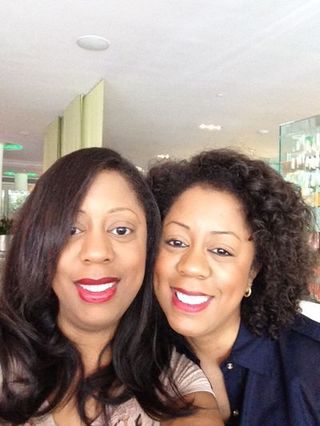
The author (right) and her twin sister (left)
By the time of my surgery, I had been chemically processing my hair my entire life. I was worried: Had I ruined my natural wave and curl pattern with the years of hot comb and chemicals?
For the first time in more than 30 years, I washed my tresses and let them air dry—and I watched my curly ringlets come to life. The more my hair dried, the happier I became.
I tried this method for a few days, experimenting with a number of shampoos and conditioners specific to curly hair. After a few attempts, I enjoyed the bouncy, curly results.
As I planned to return to the office, I started to research natural hair maintenance. Would I be able to keep this up? After a consultation and styling, I decided that I wanted to live a healthier lifestyle from the inside out—which included nutrition, exercise, and an end to chemical processing all together. I decided to stop chemically treating my hair for good.
I woke up two hours early on my first day back. I felt anxious about revealing my new hair to the world. What would my colleagues think? Could I pull off the new me? Would they think I was attempting to make some kind of political statement?
I was seized by another, more pressing question: Would this new style be acceptable in the boardroom?
On that same day, we had a global leadership team meeting, which meant that all of my colleagues from around the world would see me. I decided to put on my best dress, coif my hair in a soft, curly style with a side part, put on my makeup, and go to work.
As I suspected, my hair was the topic of conversation for many at the meeting. One female colleague pulled me to the side and said, "Why on earth did you do that? "
"Could I pull off the new me?"
And then a Black female colleague stated, "In my opinion, some hairstyles are just not appropriate for the workplace." I was deflated.
Ironically, my superiors were extremely complimentary. The CEO and his chief of staff told me how much they liked my new look. Several of my female peers praised me for having the courage to show a more authentic side of myself. A few of the more junior women even told me they had considered letting their hair go naturally curly and that I'd paved the way.
I'll admit now that I was afraid: first, of the conversations it would spark with my peers and superiors, both Black and white, and second, of the deeply ingrained racial issues regarding what constitutes "polished"—I just wasn't prepared to address them at the time.
It's been almost three years since I stopped straightening my hair. I have since left the corporate world and now run my own consulting practice. As an entrepreneur, I'm a lot less concerned about my hair—but mainly, I'm a lot less preoccupied with what others think about it.
Follow Marie Claire on Facebook for the latest celeb news, beauty tips, fascinating reads, livestream video, and more.
-
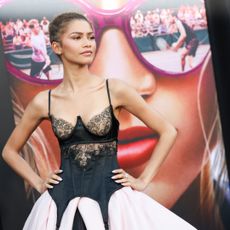 Zendaya's Method Dressing Marathon Is Over
Zendaya's Method Dressing Marathon Is OverShe found a new way to serve in custom Vera Wang.
By Halie LeSavage Published
-
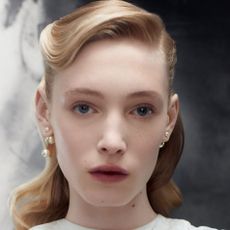 Bitten Lips Took Center Stage at Dior Fall 2024 Show
Bitten Lips Took Center Stage at Dior Fall 2024 ShowModels at the Dior Fall 2024 show paired bitten lips with bare skin, a beauty trend that will take precedence this season.
By Deena Campbell Published
-
 30 Spring Items That Solve My Expensive-Taste-on-a-Humble-Budget Dilemma
30 Spring Items That Solve My Expensive-Taste-on-a-Humble-Budget DilemmaSee every under-$300 spring item on my wish list.
By Natalie Gray Herder Published
-
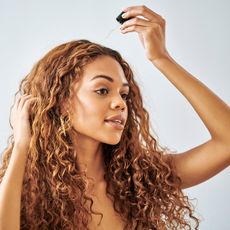 Rosemary Oil for Hair Growth: Does It Really Work?
Rosemary Oil for Hair Growth: Does It Really Work?The natural remedy went viral, but it's not a miracle worker.
By Gabrielle Ulubay Published
-
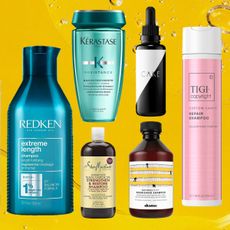 The 32 Best Hair Growth Shampoos of 2024, According to Experts
The 32 Best Hair Growth Shampoos of 2024, According to ExpertsRapunzel hair, coming right up.
By Gabrielle Ulubay Published
-
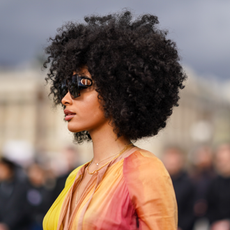 The 12 Best Deep Conditioners for Curly and Natural Hair, According to Hairstylists and Editors
The 12 Best Deep Conditioners for Curly and Natural Hair, According to Hairstylists and EditorsFight damage and frizz, rain or shine.
By Gabrielle Ulubay Last updated
-
 The 20 Best Hair Masks for Damaged Hair, According to Experts and Editors
The 20 Best Hair Masks for Damaged Hair, According to Experts and EditorsHealthy strands, here we come!
By Gabrielle Ulubay Last updated
-
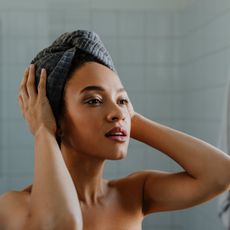 How Often You Should Wash Your Hair, According To Experts
How Often You Should Wash Your Hair, According To ExpertsKeep it fresh, my friends.
By Gabrielle Ulubay Published
-
 The 18 Best Natural Hair Products in 2023
The 18 Best Natural Hair Products in 2023Remember: Your curls are your crown.
By Gabrielle Ulubay Published
-
 The 9 Best Hot Rollers for the Curls of Your Dreams
The 9 Best Hot Rollers for the Curls of Your DreamsThis is how we roll.
By Samantha Holender Published
-
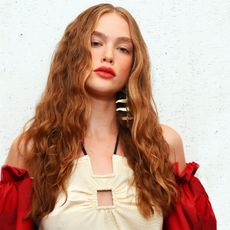 The 17 Best Sea Salt Sprays for Vacation Hair
The 17 Best Sea Salt Sprays for Vacation HairGet the beachy waves of your dreams with these fake-it-'til-you-make-it sea salt sprays.
By Gabrielle Ulubay Last updated